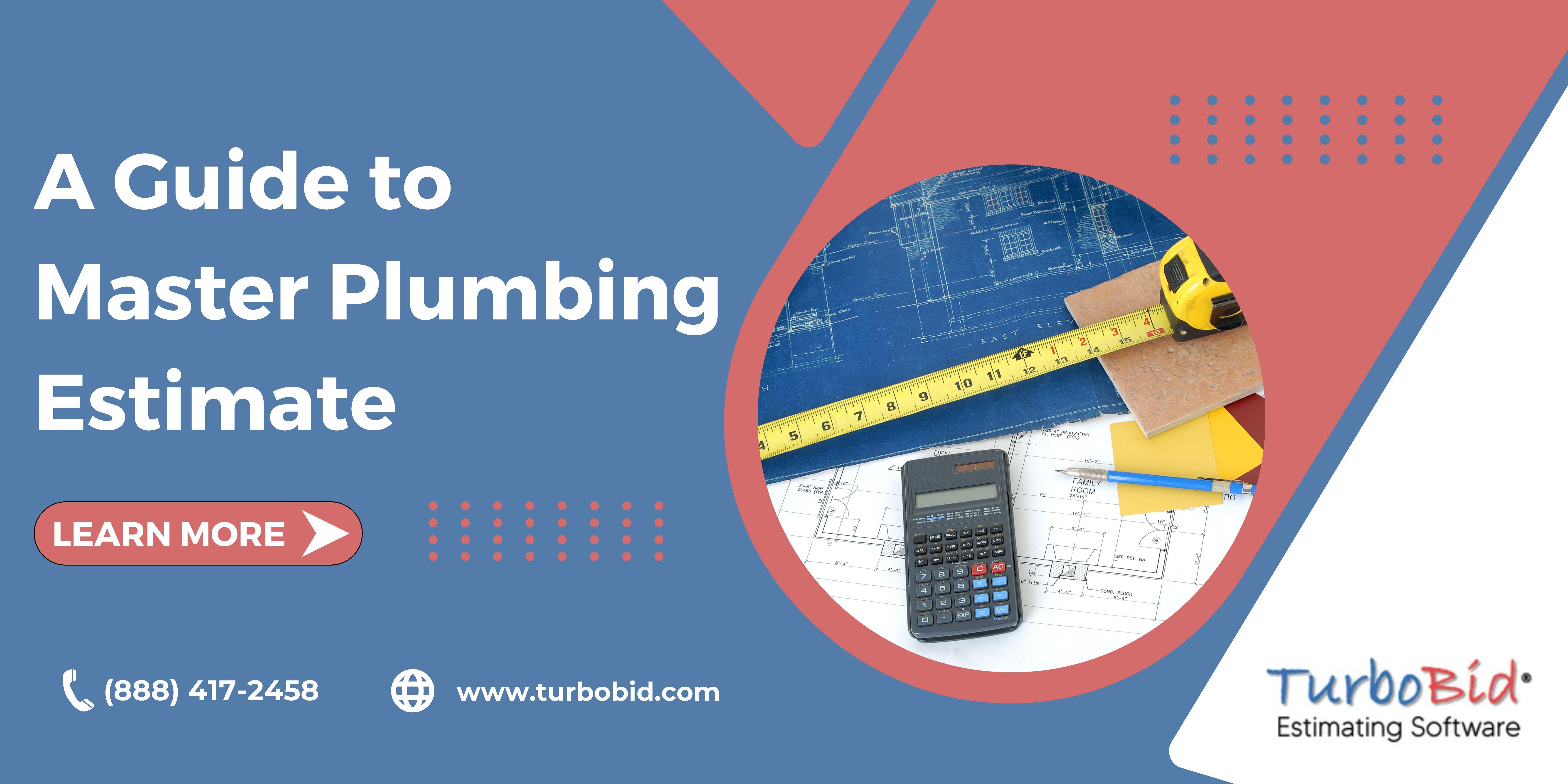Estimating the cost of plumbing projects accurately can be challenging for professionals in the industry. The manual processes consume a lot of time and are prone to errors, creating inefficient processes that struggle to keep up with modern construction projects.
Imagine your business spending countless hours discovering errors that can result in costly mistakes and delays. Traditional manual estimation methods hamper productivity and hinder the potential of businesses looking for accuracy and reliability.
Are you ready to revolutionize your plumbing estimation process? Experience the power of precision with the best-in-class plumbing estimation software. Visit TurboBid to discover how our advanced technology can streamline your estimates to boost your project efficiency.
So, whether you're a professional plumber or a project manager, this post will help you with tips to enhance your plumbing estimation skills.
Understanding Plumbing Estimation
Before we dive into the estimation, it is essential to grasp its significance. Accurate estimates create the foundation for successful project execution. The accuracy of your estimation helps establish the project's financial feasibility and assists contractors in submitting competitive bids. On the other hand, generating inaccurate bids can lead to budget overruns, customer dissatisfaction, and delays.
Various elements are involved in the accurate projection of construction projects. You need to have a deep understanding of materials, labor requirements, plumbing systems, and project timelines.
The Importance of Accurate Plumbing Estimates
Accurate plumbing estimates provide a clear picture of the material, labor, and cost of construction projects. They help project managers efficiently allocate resources and anticipate potential bottlenecks. Accurate estimates also aid in getting precise bids, ensuring a well-executed project that considers all aspects and prevents setbacks and unforeseen challenges.
While estimating plumbing costs, it is vital to consider material calculations, including fittings, pipes, valves, fixtures, and other equipment. The estimation process involves thoroughly analyzing project specifications and selecting materials that meet necessary standards and regulations.
The Plumbing Estimating Process
The plumbing estimation process has several stages, from pre-estimation to detailed estimation. Let's find out more about them.
Pre-Estimation Preparation: It is a no-brainer that you need a good understanding of the project before estimation. This includes specifications, architectural drawings, and relevant documentation. Considering factors like project scope, potential challenges, and site visits will help you get accurate estimations.
In the pre-estimation process, estimators need to carefully analyze architectural drawings to learn about the layout and design of the plumbing system. They review specifications to identify the necessary materials and equipment. This attention to detail guarantees that the estimation process relies on precise and current information.
Detailed Estimation Steps: After completing the preparation for pre-estimation, it is time to begin the detailed estimation process. This includes breaking down the project into various components, such as pipelines, fixtures, fittings, and valves. Estimators should consider the quantity and type of materials needed, as well as labor costs and any subcontracting requirements. Specialized software can be used for accurate calculations to streamline this process and reduce manual errors,
Estimators must carefully analyze architectural drawings to determine the different types of pipes and sizes needed for the plumbing systems. They consider factors such as water flow, pressure requirements, and building codes to find appropriate pipe materials and sizes.
It is where getting help from plumbing estimation software can greatly assist in the detailed estimation process. These tools help estimators input data for accurate calculations. The software can help break down the cost, material list, and labor schedules to produce a comprehensive estimate for the plumbing project.
Tips for Improving Your Plumbing Estimation Skills
There are several ways to improve plumbing estimation skills besides using the right tools. Here are some of them.
Continuous Learning and Development: The construction industry is evolving daily with new techniques, materials, and regulations. Staying current with skills with online learning and seminars can help enhance estimation skills. New learning will help you adopt best practices and use updated tools and techniques.
Networking with Plumbing Professionals: Networking with other plumbing professionals is valuable for exchanging knowledge, gaining insights, and learning from each other's experiences. You can expand your professional network and create new opportunities by engaging in industry forums, joining professional organizations, and participating in networking events.
Conclusion:
Mastering plumbing estimation requires a thorough understanding of key concepts and a good knowledge of tools and techniques. But if your estimation process is hurting profitability because you are performing manual estimates and finding it hard to locate where the profitable problems are hiding, then it's time to turn to technology. Plumbing estimation software is a better way to produce accurate estimates and ensure that you stay profitable in every project.
Also Read Related Topics:
